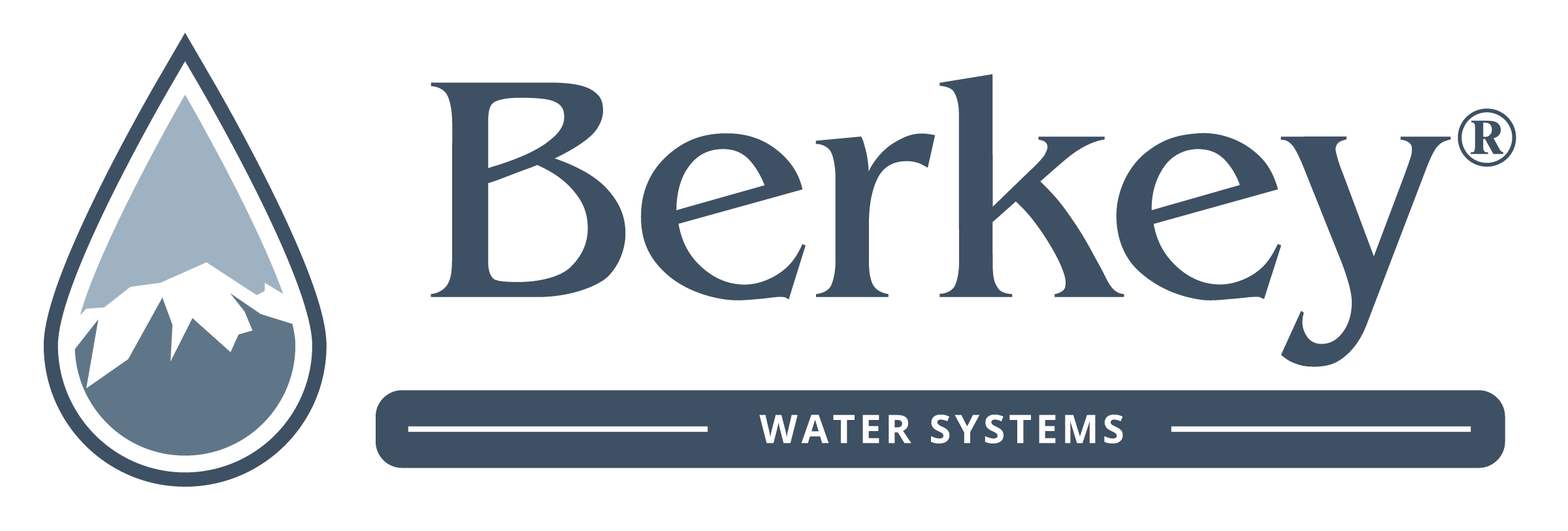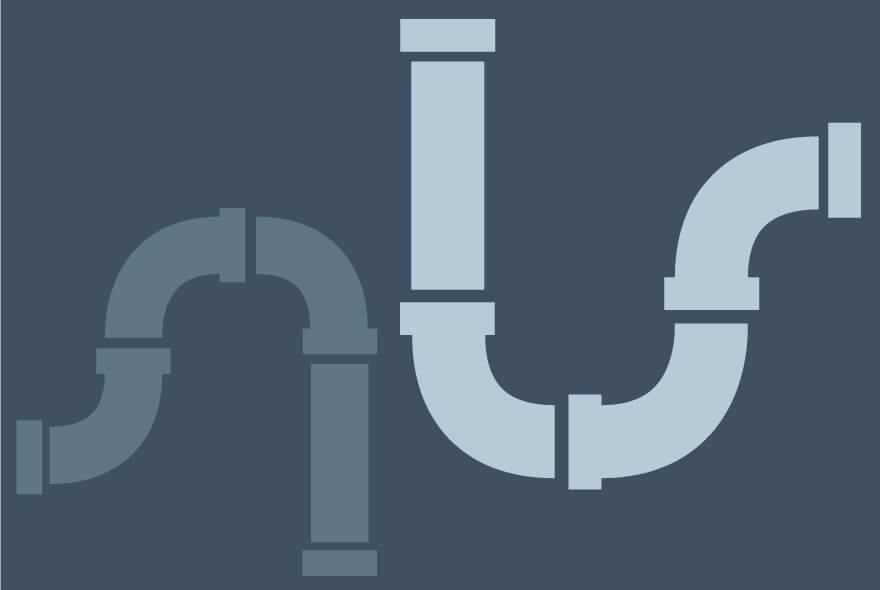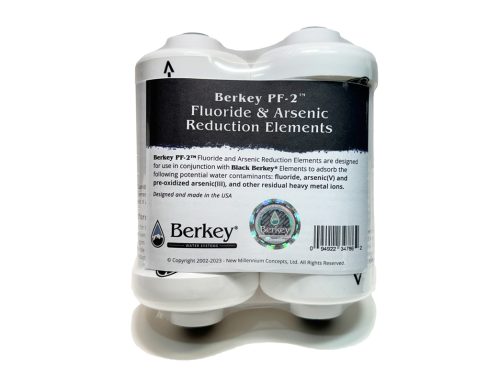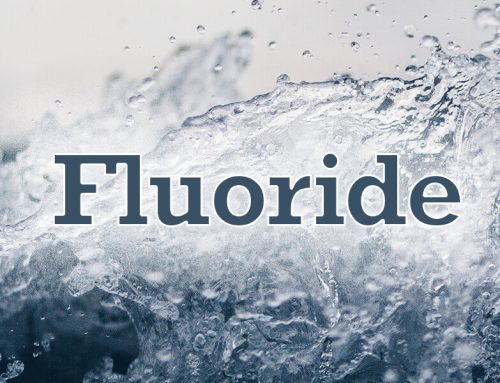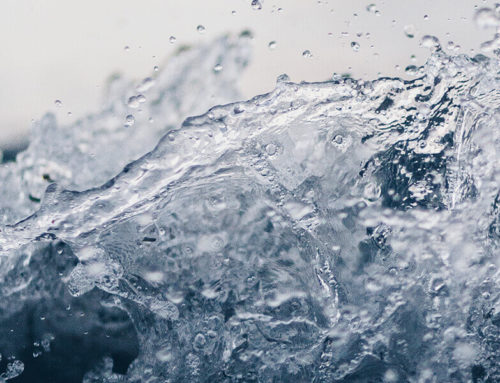From General Manager and resident expert Adam Lock at New Millennium Concepts, Ltd.
I’m going to start this off with a surprising fact: D is the current grade given for the water infrastructure in the US. This report is compiled every 4 years by the American Society of Civil Engineers. And you can read more about it at the Infrastructure Report Card website1
Why the “D” Grade? Well, Let’s Talk About Pipes…
According to a Utah State University study conducted about 5 years ago: In the US and Canada, the underground water infrastructure was installed during three main time periods, primarily because of the population growth. This happened in the:
- 1800s
- from 1900–1945
- Tand post 1945
It is theorized that pipes constructed in each of these three eras will all start to fail at nearly the same time over the next couple of decades. This for a number of reasons ranging from age and corrosion to inadequate design and even poor installation. Additionally, the lifespan of the materials used has become shorter with each new investment cycle.2
Lifespan of Water Infrastructure Materials by Period
In 2001, an American Water Works Association study pointed out that: The oldest cast iron pipes—dating to the late 1800s—have an average useful lifespan of about 120 years. Then, because manufacturing techniques and material changes, the roaring ’20s vintage of cast-iron pipes have an average lifespan of about 100 years. Of course techniques and materials continued to evolve, and not necessarily in a way that expanded lifespan. Pipes laid down in the Post-World War II boom have an average life of 75 years, more or less.
What does this mean? Well, clearly, using these average lifespan estimates and counting the years since the original installations; water utilities are going to face significant needs for pipe replacement over the next few decades.
According to the AWWA, replacement of pipes installed from the late 1800s to the 1950s is now hard upon us, and replacement of pipes installed in the latter half of the 20th Century will dominate the remainder of this century. Moreover, the AWWA states that these replacement costs combined with projected expansion costs are going to run more than 1 trillion dollars over the next couple of decades.
LET’S STOP AND LOOK AT COST
It’s important to realize that replacing corroded pipes and water infrastructure is a huge economic challenge. The EPA estimates that it could cost between $2,500 to $8,000 to replace a typical home’s full service line. The national cost estimated by the EPA is between $16 billion to $80 billion.
And look, these projected expenditures are coming at a time when governments at all levels are facing substantial budget shortfalls. It’s a real issue, across this country.
THE TAKEAWAY
So what’s the takeaway? You hear people say, “I grew up on tap water, and I’m fine.” That’s true. But water concerns today are different. Our water infrastructure’s lifespan is coming to an end and replacement, which will likely prove difficult, is on the horizon. Pipes in cities all across America are now really beginning to show their age, and there are valid reasons to be concerned.
Physically, What’s Going on Underground?
Let’s focus on what physically, is happening to these aging pipes. A major issue is corrosion. From the CDC Website, we find that:
Metal pipe corrosion is a continuous and variable process of ion release from the pipe into the water. Under certain environmental conditions, metal pipes can become corroded based on the properties of the pipe, the surrounding soil, the water properties and stray electric currents.3
Further, many water quality factors affect corrosion of pipes, including the chemistry and characteristics of the water (such as the pH, alkalinity & biology), salts and chemicals that are dissolved in the water, and the physical properties of the water itself, such as temperature, gases & solid particles.
CONTAMINANTS DUE TO CORROSION
And, because some household plumbing fixtures may contain lead or copper, corrosive waters can leach (or pick up) lead and copper from household plumbing pipes after entering a home. This is a greater issue for older houses typically houses built before 1981, especially if the plumbing system has not been replaced.
So we’re talking about “heavy metals,” which can impact your health. According to the Texas A&M Agrilife Extension Service:
Copper contamination can cause gastrointestinal problems in the short term and damage the liver and kidneys over time. Lead contamination can cause physical and mental development problems in children. In adults, it can lead to high blood pressure and kidney problems.4
WATER TREATMENT SPEEDS CORROSION, AND TRIES TO SLOW IT DOWN
So water, soil, pipes- they are all factors in corrosion. But water treatment strategies also play a role. There are more than 40 chemical additives that can be used to treat drinking water. Many of these commonly used additives are acidic, such as ferric chloride and aluminum sulfate. They’re added to remove turbidity and other particulate matter.
Various chlorine disinfectants, also act as acids and have the potential to reduce pH, alkalinity, and buffer intensity. Buffer intensity by the way is defined as “the moles per liter of strong base which when added to a solution causes a unit change in pH.”
Acid Base Chemistry Lecture Notes University of Texas
Now, the CDC maintains data sheets on chemical compounds. Feel free to look them up at The National Institute for Occupational Safety and Health. You will find that ferric chloride and aluminum sulfate are both listed as potentially causing abdominal pain, nausea and vomiting if ingested. While effective at doing their job in water treatment facilities, it’s important for readers to understand what chemicals are potentially present in their water.
Unfortunately, these acidic water treatment additives can interfere with corrosion protection. So corrosion inhibitors like fluoride are also often used to to address the corrosion influence of acidic water treatment.
Inhibitors like fluoride and other additives have roles to play, that’s for sure, but do you want to take additional measures to remove them before drinking from the tap or not?
And before we move on, let me point out that there’s another way additives can be a cause for concern when it comes to water infrastructure. At times, additives may interact with other, unanticipated chemical compounds present in water. As I’ll mention in a moment, Madison & Eden, NC have both faced issues with trihalomethanes, an unhealthy byproduct of chlorine and bromide mixing. The chlorine was present on purpose, it’s used in water treatment. The bromide, however, was not. An outside factor introduced this into the water source, causing an unintended consequence.
CORROSION MEANS MORE “STUFF” IN YOUR WATER
Whether we’re talking about chemical additives to prevent corrosion or heavy metals occurring as a result of corrosion, the bottom line is that water treatment and aging pipes mean more “stuff” can potentially end up in your water one way or another.
Symptoms of Corrosion: Broken Water Mains and Boil Alerts
Let’s look at a website called WaterMainBreakClock.com5. It tracks broken water mains and repair costs each day. Here are some incredible facts as of the time I wrote this:
- Each day, it is estimated that about 850 water main breaks occur in North America.
- Since January 2000, when they started keeping track, there have been:
- Over 5-million, 359-Thousand broken water mains.
- Which has cost over 53.5 Billion dollars in water main repairs.
- According to a 2002 congressional study, corrosion costs U.S. water and wastewater systems over $50.7 billion annually. Since January 2000, the price tag for this epidemic in the United States isnearly 697-Billion dollars in total corrosion costs.
Now… truth be told, this particular website is sponsored by a company that sells PVC piping. Still, it’s some interesting and rather disturbing information that they are tracking.
Now on to boil alerts. In just the last month, I can point to at least 17 water main breaks that necessitated residents boil their water (or use a Berkey®). Again, these are NOT current boil water advisories, but rather those that occurred in the last month. The list includes:
- In Texas: -Pflugerville & parts of Williamson County.
- In Mississippi: -Jackson & Raymond.
- Shasta County, California
- Danville, Kentucky
- Whiteville, North Carolina
- Aiken County, South Carolina
- South Toledo, Ohio
- Rostraver Township, Pennsylvania
- In Florida: -Mexico Beach, Wellington, North Miami Beach & northeast Miami-Dade County.
- And in Louisiana: Hammond and St. James Parish
This is nowhere near a complete list; it’s just a small smattering of boil water notices issued over the last few weeks. If you want to keep an eye on these, you’ll find Twitter a common place for announcements. Search for #BoilAlert or #BoilAdvisory for example.
Are Water Infrastructure Concerns Affecting You?
So, is all of this having an impact on the water coming out of your faucet?
Let’s look at this in more detail by considering just a few infrastructure issues that have occurred recently. The most well known case is, of course, Flint, Michigan. It’s been steadily in and out of the news, over the extreme levels of lead found in the town’s drinking water.
From the AP and covered in the LA Daily News:
Flint residents may still be years away from receiving drinkable tap water. The city’s goal is to finish pipe replacements in 2019, by fixing some 6,000 homes per year. That plan has been called everything from ambitious all the way to unachievable. The city has estimated that lines to 20,000 homes need to be replaced and that work, according to recent reports, is going slow.6
As of mid-last month, lines to fewer than 800 homes had been replaced with new copper pipe. Interesting, 57 percent of the roughly 100,000 residents there, still do not trust the government because of failures that led to the current water crisis.
NOT AN ISOLATED INCIDENT
But it’s important to note that Flint is not an isolated incident. As we established at the beginning, pipes nationwide are approaching the end of their useful lifespan. Here’s a short list of other cities that have faced water infrastructure concerns due to aging pipes:
Pittsburgh, PN– From WPXI News in PA: The Allegheny County Controller is demanding that Pittsburgh leadership take action to address elevated lead levels in city water, which she called a “public health crisis” and compared it to the situation in Flint. The controller was quoted as saying that “Lead is leaching through the lines of one in four homes that are serviced” by their local municipality.
Pittsburgh’s Mayor said the city has taken steps to protect residents, such as establishing a plan to provide water filters and offering low-interest loans for homeowners to replace lead lines. The cost of removing the lead lines is estimated at $25 million. This on top of the local water & sewer authority apparently dealing with a $1-Billion dollar existing debt.7
San Diego, CA– From the San Diego Union-Tribune: The San Ysidro (San-Ah- See-Dro) School District continued to distribute bottled water at its three oldest campuses last month, following findings of elevated levels of lead and copper in plumbing at one of the schools. Last year, an employee noticed discolored water in faucets during pressure tests for plumbing leaks. Water to all drinking fountains, sinks and faucets was shut off immediately.8
Greensboro, NC– From the News & Record in Greensboro, NC: Trihalomethanes are the concern there. Places out east that are dealing with this issue include the towns of Madison and city of Eden, both in North Carolina as well as Henry County, VA […] In all three cases, the common source of water was the Dan River. And it is believed that the primary cause for spikes of trihalomethanes in the drinking water is bromide, which comes from the a power plant up river. When bromide interacts with chlorine — a disinfectant commonly used by some water-treatment plants, an unhealthy byproduct can emerge: trihalomethanes.
If consumed in sufficient quantities over many years, these chemicals may cause cancer as well as kidney or liver problems, and they could adversely affect the central nervous system, according to the Agency for Toxic Substances and Disease Registry.9
Pembroke Pines, FL– As reported by WPLG: The Florida Department of Health claims the water in the city of Pembroke Pines does not meet proper standards and they are angry with city officials for not properly alerting residents.
During a late 2016 test, the water in Pembroke Pines was found to exceed the proper levels of Total Trihalomethane (TTHM). Despite knowing for months about a water issue, the city has apparently still not fixed the problem.
Even the well know Erin Brockovich stepped into this one last week, citing not just Pembroke Pines, but also the city of Clearwater and Safety Harbor, Florida as exceeding the TTHM limits.10
The Lone Star State of Texas– From The Dallas Morning News: According to an analysis by Environment Texas, 65 percent of Texas schools that have tested their water showed lead levels greater than the standard recommended by the American Academy of Pediatrics. It is believed that the reason for this pervasive problem is that the water delivery systems are lined with lead, from the pipes to the plumbing and fixtures. In some cases, the service line that brings water from the main pipe in the street into a home or school is entirely made of lead.11
Where Does the Law Come In?
Let’s briefly touch on The Safe Water Drinking Act of 1974. This is the federal law that protects public drinking water supplies throughout the nation. Under the SWDA, the EPA sets standards for drinking water quality and with its partners implements various technical and financial programs to ensure drinking water safety. These standards for drinking water are designed to protect against both naturally-occurring and manmade contaminants that may be found in drinking water.
But there are a number of threats to drinking water: improperly disposed of chemicals; animal wastes; pesticides; human threats; wastes injected underground; and naturally-occurring substances can all contaminate drinking water. Likewise, drinking water that is not properly treated or disinfected, or which travels through an improperly maintained distribution system, may also pose a health risk.
The SWDA was modified in 1986 and 1996, meaning that the current law as it stands is over 20 years old. And unfortunately, not all systems meet all the requirements, all the time.
Even with the SWDA and other regulations in place, the fact of the matter is that folks here in the US remain worried about their drinking water. A Gallup Poll conducted just last month indicates that nearly two-thirds of Americans are “worried a great deal about pollution of drinking water.” This is a major change in the level of concern, the highest it has been since 2001. And, this is quite understandable, given the overall aging water infrastructure and the issues such as those we just discussed, people have a reason to be concerned.
Gallop Poll- Americans are “worried a great deal about polution of drinking water”
What to do about it? Pursue Understanding and Consider a Final Barrier System
Your best protection against an aging water supply and the possibility of unexpected contaminants potentially entering your water supply, is to take control of the water you consume. We know pipes are aging, and that issues are sometimes widespread. Having a final barrier system, like a Berkey® Water System, is a practical way to protect yourself and your family from the contaminants that could enter your tap water through these pipes. Final barrier systems are not something new, and many different organizations and governmental agencies have recently come out suggesting people use one.
As I’ve said numerous times over the years, we’re not picking on the municipalities themselves, nor those that work for them. Most are good people, trying doing their job. But remember that contamination of your drinking water can occur after the water leaves a public treatment facility and flows through old, leaching and corrosive plumbing material.
Berkey® Systems will reduce or remove those contaminants we mentioned earlier such as trihalomethanes, bromide, copper and lead (to an extreme level). Additionally, the Black Berkey® Elements, which are the heart of Berkey® systems, also address potential contaminants such as heavy metals, pesticides, volatile organic compounds, rust, silt, sediment, that sulfur rotten egg smell, petroleum products, radiological contaminants, perfluorinated chemicals and even pharmaceutical drugs.
Unlike other systems where you have to either replace the elements after an average of 6 months, or will only do such things as addressing tastes and odors, or where you have to keep the elements wet all the time, the Black Berkey® Elements are designed to be dried out, stored and reused when needed, over and over again.
Be proactive. Keep an eye on the news, continue to research water infrastructure issues in the US and protect yourself and your family today.
References
(1) 2017 Infrastructure Report Card: Water
(2) (WIN, 2002)
(3) CDC.gov: Fluoridation of Drinking Water and Corrosion of Pipes in Distribution Systems Fact Sheet
(4) TAMU: Soil Testing
(5) The Water Main Break Clock
(6) DailyNews.com- Effort to Replace Water Pipes to Flint Homes Off to a Slow Start
(7) WPXI.com- Lead levels in Pittsburgh water, ‘Public Health Crisis’ controler says
(8) San Ysidro School District still serving bottled water
(9) Madison and Eden continue costly search for cleaner drinking water
(10) City of Pembroke Pines water does not meet standards of health department
(11) Texas needs to eliminate lead from water in schools
